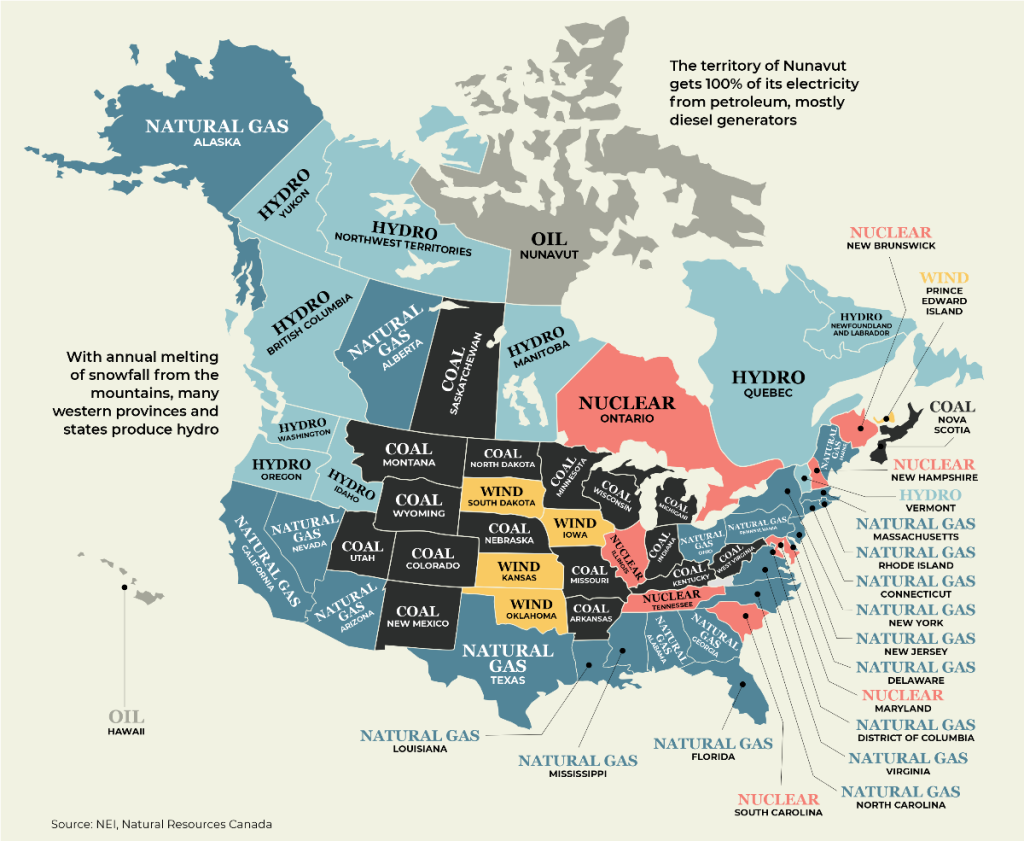How We Heat and Power the North

Last week, we mapped out the leading source of power for each state and province in the US and Canada. Many of you wondered why remote northern communities relied so heavily on oil for power and heat.
You asked, we answered—let’s talk about it.
Jingle Bells, Jingle Bells, diesel all the way
Particularly in the North Pole Canadian territories, diesel is one of the only choices for remote communities to produce reliable power and heat in the dead of winter.
- For context, the 25 communities across Nunavut use diesel generators to meet nearly 100 percent of their power needs, producing about 250 gigawatt-hours annually, or about 0.039 percent of Canada’s total electricity production. And petroleum-based power contributes less than 1 percent of total Canadian emissions.
The Pembina Institute found that remote communities across Canada consume between 650 and 700 million liters of petroleum products every year, equivalent to roughly 11 or 12 thousand barrels per day (more in winter, less in summer).
The top source of electricity in every state and province

For remote communities, reliability comes first
As you get further north and more remote, the importance of having reliable heat and electricity is magnified—particularly when it’s -40 degrees and takes several days to get supplies in the case of an outage or equipment failure.
And no grid access: Over 200 communities across Canada aren’t connected to a regional electricity grid, as doing so across vast remote landscapes is prohibitively expensive. This means they rely solely on local facilities for fuel, power, heat, and water.
Without a regional grid connection, local systems aren’t set up to transfer power between communities or accommodate large fluctuations from intermittent renewable power sources.
Diesel-powered remote communities in Canada (2018)

Renewables as a supporting actor: Like Val Kilmer in Top Gun, renewable power is starting to play the supporting role when it comes to remote community power generation. While diesel remains the Tom Cruise of these communities, many are developing hybrid diesel-renewable generation for both financial and environmental reasons.
- Old Crow, Yukon developed a solar project that provides about 25 percent of its electricity—mostly in the summer—and reduces its diesel demand by almost 200,000 liters per year. Kuglutuk, Nunavut is doing something similar.
- Sanikiluaq, Nunavut plans to deploy ten 100-kilowatt wind turbines and 800 kilowatts of battery storage to displace 50 percent of the diesel it uses for electricity.
- Frobisher Bay, Nunavut is considering producing tidal energy with the potential to generate as much as 30,000 megawatts across some 35 locations, assuming projects can prove they won’t impact marine life.
Bigger picture: For remote communities, the math is simple:
Reliability > cost > carbon intensity
The right energy solution depends on the customer and the conditions they live in or operate in. Reliability—currently provided by diesel generators—remains a non-negotiable priority for northern communities. But hybrid fossil-renewable systems are starting to be deployed to maintain reliability, while reducing cost and carbon intensity.




